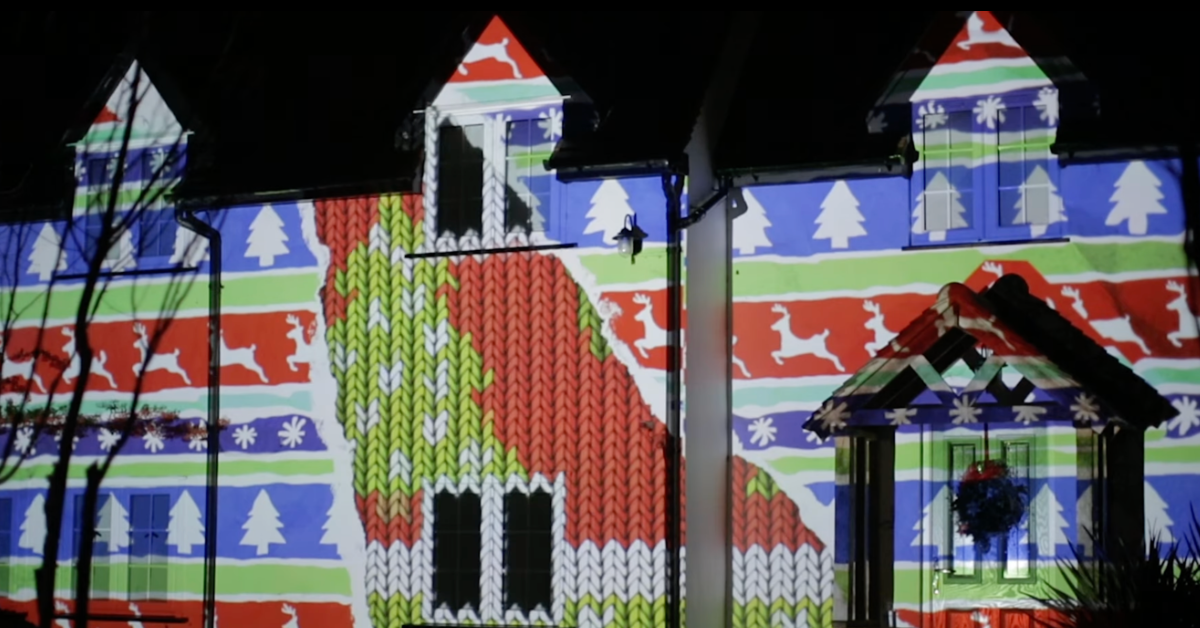How Does Projection Mapping Work
In recent years, projection mapping has revolutionized the world of visual arts, entertainment, and advertising.
In short, projection mapping works by projecting digital content onto three-dimensional objects or surfaces, transforming their appearance and creating captivating visual experiences.
From architectural facades to stage performances, projection mapping has become an indispensable tool for creating immersive and awe-inspiring experiences. But how exactly does projection mapping work? Let's delve into the fascinating technology behind this mesmerizing art form.
- Defining Projection Mapping
- The Process
- Applications and Impact
- FAQ about How Does Projection Mapping Work
- Сonclusion
Defining Projection Mapping
Projection mapping, also known as spatial augmented reality or video mapping, involves the projection of light onto objects or surfaces to create the illusion of transforming their appearance.
Unlike traditional projection methods that utilize flat screens, projection mapping allows for the adaptation of projections to complex three-dimensional shapes, making it possible to create illusions of depth, movement, and interactivity.

The Process
Object Selection: The first step in projection mapping is choosing an object or surface onto which the projection will be applied. This can range from buildings, sculptures, and vehicles to stages, furniture, and even human bodies.
3D Scanning and Modeling: Once the object is selected, it is necessary to capture its shape and dimensions accurately. This is achieved through 3D scanning techniques, such as laser scanning or photogrammetry, which create a digital representation of the object. The 3D model allows the content creators to precisely align the digital visuals with the physical object.
Content Creation: The next phase involves creating or adapting visual content specifically designed for the chosen object. This content can be a combination of images, videos, animations, or even interactive elements. The content is meticulously designed to match the object's shape, contours, and details, ensuring a seamless projection.
Projection Setup: To project the visuals onto the object, multiple projectors are strategically positioned around the area. These projectors need to be precisely calibrated and aligned to ensure accurate mapping and seamless blending of the projected images.

Calibration and Mapping: Calibration is a crucial step in projection mapping. Using specialized software, the projection system is aligned with the object's 3D model.
This process involves adjusting the projectors' lens settings, position, and orientation to match the virtual representation of the object. This alignment allows the projected content to seamlessly fit onto the object's surface, regardless of its irregularities.
Projection and Interactivity: Once the calibration is complete, the projection mapping system is ready to bring the object to life. The projectors beam the visuals onto the object, carefully aligning and mapping each element onto its respective surface.
The content can be programmed to synchronize with music, motion sensors, or interactive devices, adding an extra layer of immersion and engagement.
Applications and Impact
Projection mapping has transcended various domains and has become a staple in several industries. Based on our research, here are some of the most well-known applications:
- Art and Installations: Projection mapping has provided artists with new ways to express their creativity and transform spaces. Sculptures, art installations, and entire buildings serve as canvases for dynamic and visually stunning creations
- Entertainment and Events: Projection mapping has revolutionized live performances, concerts, and theatrical productions. It enables the creation of immersive and visually captivating experiences, blending the real and virtual worlds seamlessly.
- Advertising and Branding: Projection mapping offers a unique and attention-grabbing approach to marketing and advertising. From storefronts to product launches, projection mapping provides brands with an impactful way to engage and mesmerize their audiences, leaving a lasting impression and enhancing brand recognition.
- Architectural Projection: Projection mapping has transformed the way we perceive buildings and structures. Architectural facades can be turned into dynamic displays, showcasing stunning visuals and narratives, enhancing the overall aesthetics of urban landscapes.
- Educational and Museums: Projection mapping has found its way into educational settings and museums, providing interactive and informative experiences. Exhibits can come to life, offering visitors a deeper understanding of historical events, scientific concepts, or artistic movements.
- Home entertainment: Projection mapping is also used at home by projecting images onto their homes for Halloween, Christmas and other holidays or parties. This allows you to spice up family nights, delight your neighbors, or bring even more fun to your home.
FAQ about How Does Projection Mapping Work
Here are some frequently asked questions about How Does Projection Mapping Work?
What is projection mapping?
Projection mapping, also known as spatial augmented reality or video mapping, is a technique that involves projecting digital content onto three-dimensional objects or surfaces to create the illusion of transforming their appearance.
How does projection mapping differ from traditional projection methods?
Unlike traditional projection methods that use flat screens, projection mapping adapts projections to complex three-dimensional shapes. This allows for the creation of illusions of depth, movement, and interactivity on the objects or surfaces being projected upon.
How is content precisely aligned with the object's surface during projection mapping?
The alignment is achieved through calibration. Specialized software is used to adjust the projectors' lens settings, position, and orientation to match the virtual representation of the object. This alignment ensures that the projected content seamlessly fits onto the object's surface, accounting for its irregularities.

What kind of content can be used in projection mapping?
The content used in projection mapping can vary widely and depends on the desired effect and the creative vision of the artist or designer. It can include images, videos, animations, or even interactive elements that engage the audience in real-time.
Can projection mapping be used for smaller-scale applications?
Absolutely. Projection mapping is scalable and can be used for smaller-scale applications as well. It can be applied to objects such as sculptures, furniture, or even smaller architectural elements, providing visually captivating experiences in more intimate settings.
How Does Projection Mapping Work: Conclusion
Projection mapping has revolutionized the world of visual arts, entertainment, and advertising by leveraging the power of the projection mapping projector. This remarkable technology offers endless possibilities for transforming objects and spaces into captivating visual experiences.
Through careful calibration, mapping, and the creative use of digital content, the projection mapping projector brings static surfaces to life, breathing new energy into every projection. The projector's precise alignment and mapping capabilities ensure that the visuals seamlessly fit onto the object's surface, regardless of its irregularities.
As technology continues to advance, the projection mapping projector will play a pivotal role in the evolution of this art form. Its ability to deliver high-resolution projections, incorporate interactive elements, and synchronize with other devices will further captivate audiences and push the boundaries of creativity.
You may also like:
